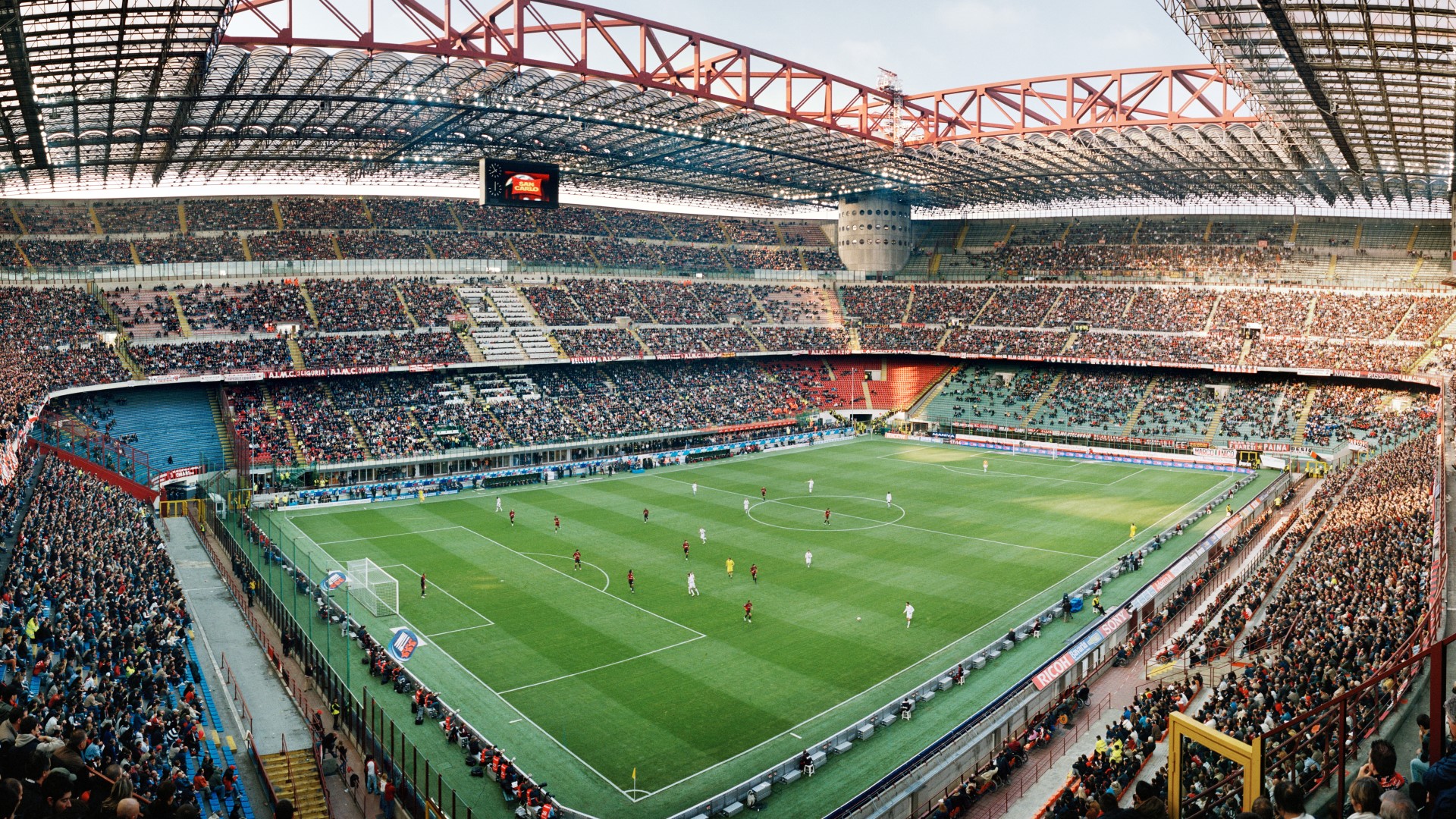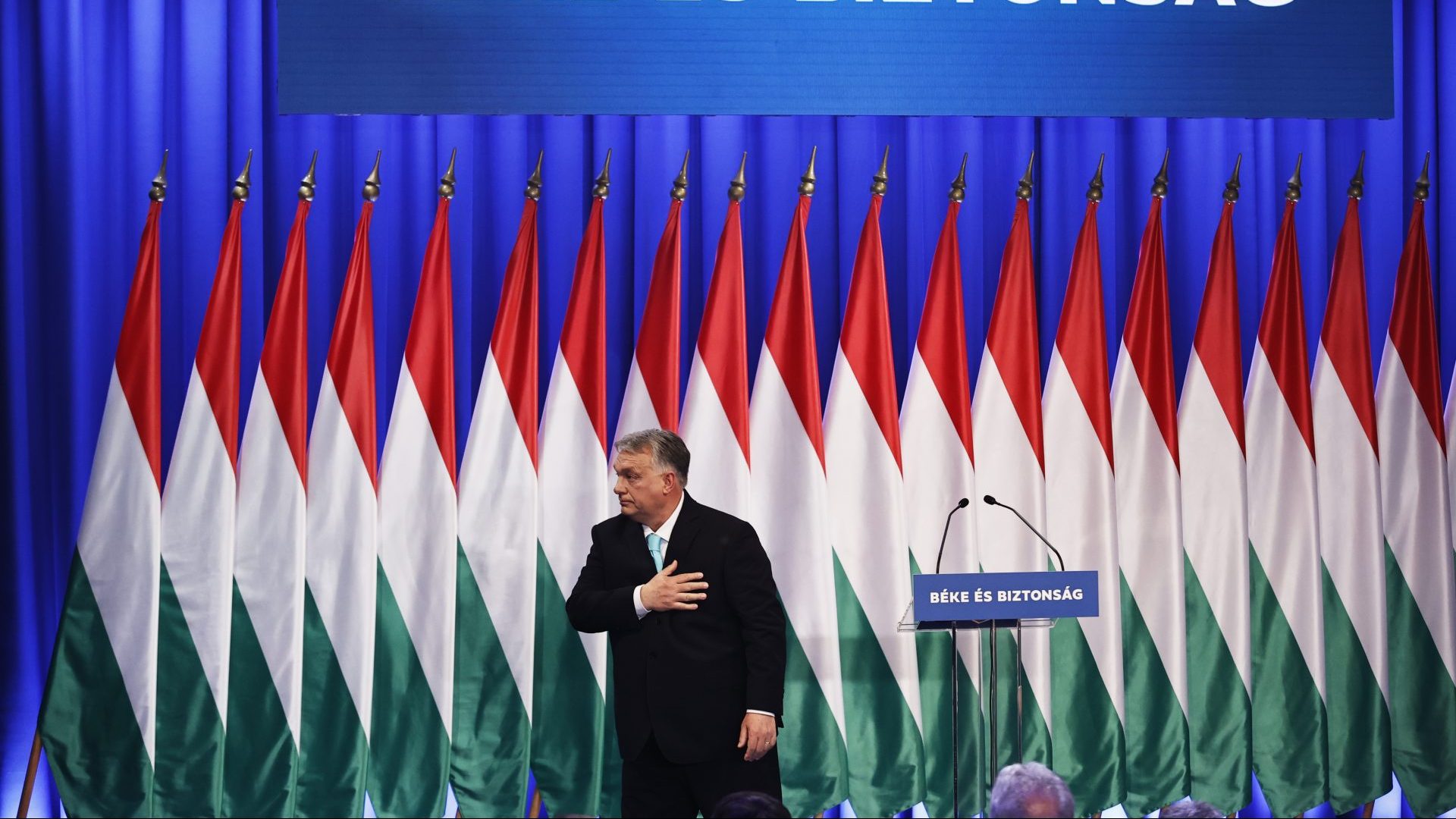La Scala del calcio, the spaceship on springs, the temple of football. The stadium that dominates a suburb to the north-west of central Milan has been called many things since it opened in September 1926 – first the Nuovo Stadio Calcistico (new football stadium), later the Giuseppe Meazza, in memory of the great Milanese footballer and manager. There are all those nicknames, and then there is what most of us call it: the San Siro.
A concrete near-centurion whose age cannot now be completely concealed by licks of warpaint and occasional cosmetic surgery, the stadium wheeled itself back into the world’s gaze this month when it hosted a pair of Champions League semi-final derby match legs featuring the teams who share it week by week, the Rossoneri (red-and-blacks) of AC Milan and the Nerazzurri (black-and-blues) of their city rivals Inter. This was an unexpected return to the grand European stage for the stadium and its clubs.
With three matches left of the Serie A season, Inter and Milan are third and fifth respectively in Serie A this season, 17 and 22 points off title winners Napoli. Neither topped their Champions League qualifying group. Their paths to the semi-finals can also be considered fortuitous, Inter dismissing two teams from the inferior Portuguese league and Milan sneaking past a turmoil-ridden Spurs and an out-of-puff Napoli, a familiar foe then stumbling towards the league finish line.
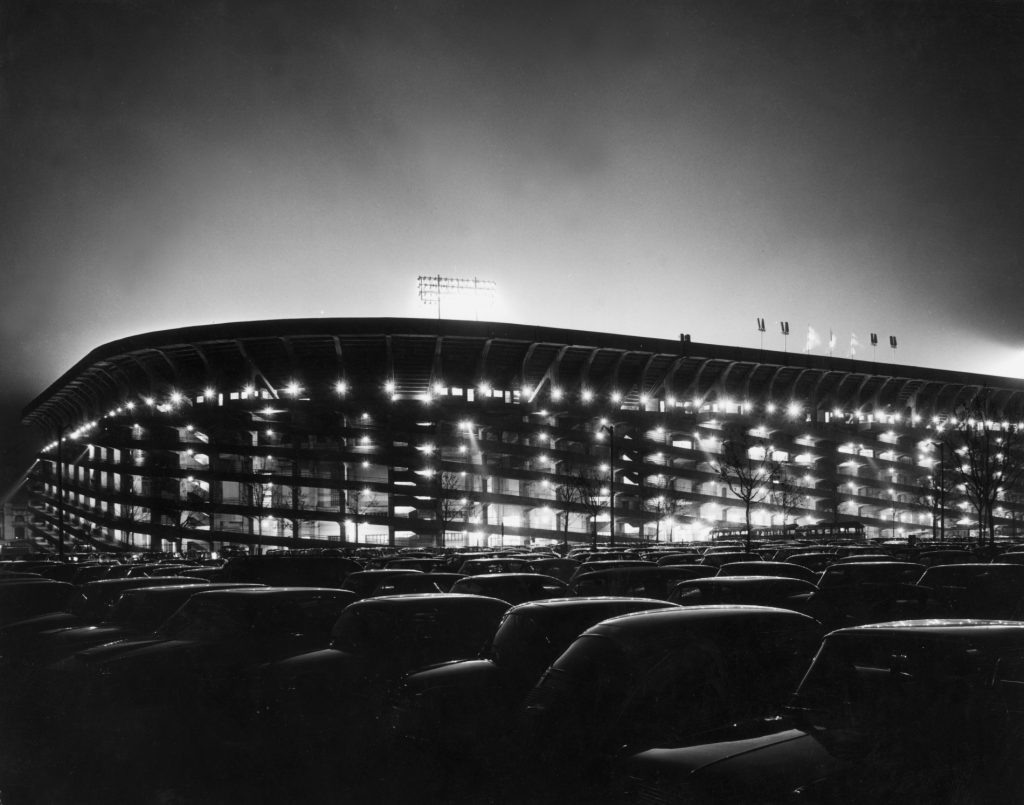
The semi-finals may offer one of our final chances to see the San Siro deep into a major competition. On one visit, the taxi driver who dropped me off in a spring rainstorm that felt more Manchester than Milan, told me the city and the clubs should pull it down and start again. That was almost two decades ago, and finally, they are taking him seriously. Plans for a new, shared stadium with a design intended to echo the city’s Duomo and Galleria Vittorio Emanuele, are well advanced.
With classic Milanese grandiosity, it is to be known as The Cathedral, although Inter may not make it to the church on time. For reasons variously attributed to financial worries, a dispute between their Chinese owner Steven Zhang and Milan’s American chief Gerry Cardinale or simply a belief that there is more money to be made by setting up alone, they are threatening to pull out of the deal and build a new home away from the cramped San Siro area.
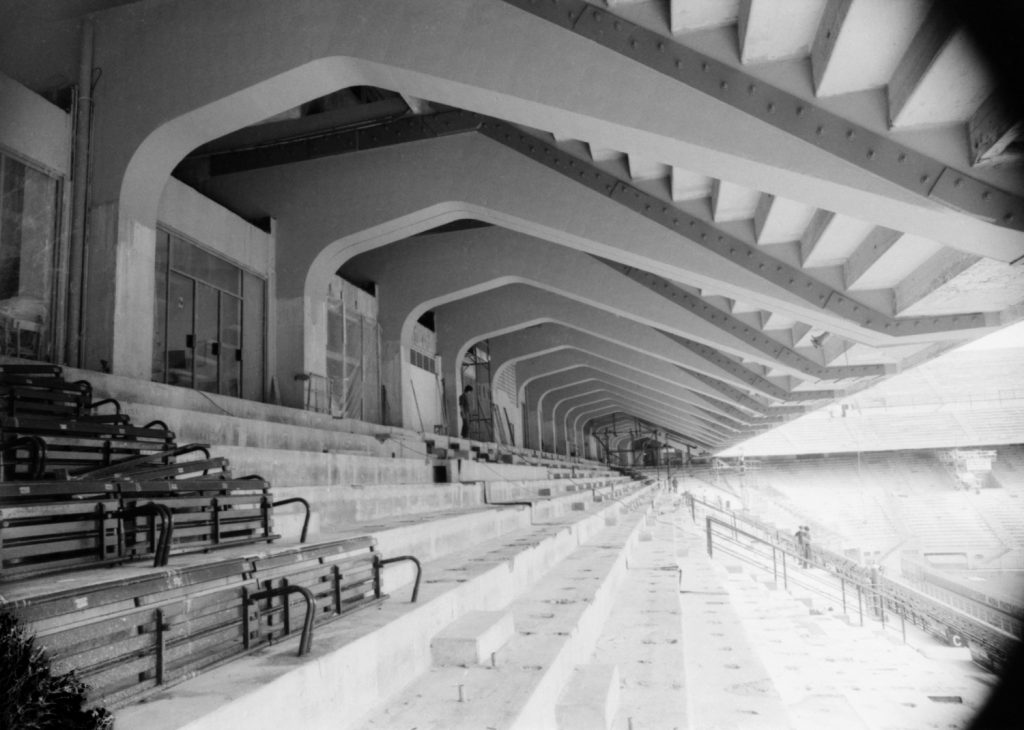
The first leg of the semi-final, designated a “home” tie for Milan, demonstrated why this would be a shame. Unless I missed it on the TV coverage, there was no repeat of the memorable derby stunt from a few years back, when fans in one second-tier block arrived to find instructions on their seat telling them to either turn on or keep off the torches on their smartphones at a certain time before kick-off. At the appointed hour, the lights spelled out “Inter Merda” (“Inter are shit”).
This time, there was still a sea of red-and-black flags, a spatter of red flares, a giant home banner reading “l’inferno e’ vuoto, tutti i diavolo sono qui” (“Hell is empty, all the devils are here”) and a card stunt displaying a huge mosaic of a leering devil. It was an intimidatory atmosphere that lasted for eight minutes, until Edin Džeko scored for Inter. When Henrikh Mkhitaryan added a second three minutes later, thoughts all around the San Siro were already turning to the return fixture. For Milan supporters, a quick opportunity to steal back bragging rights, and a place in the Istanbul final. For the 7,000 Inter fans, a chance to come back as the home side, ride out the 90 minutes and take part in one of the most extraordinary sensations in football – a monstrous concrete monument literally shaking in joy.
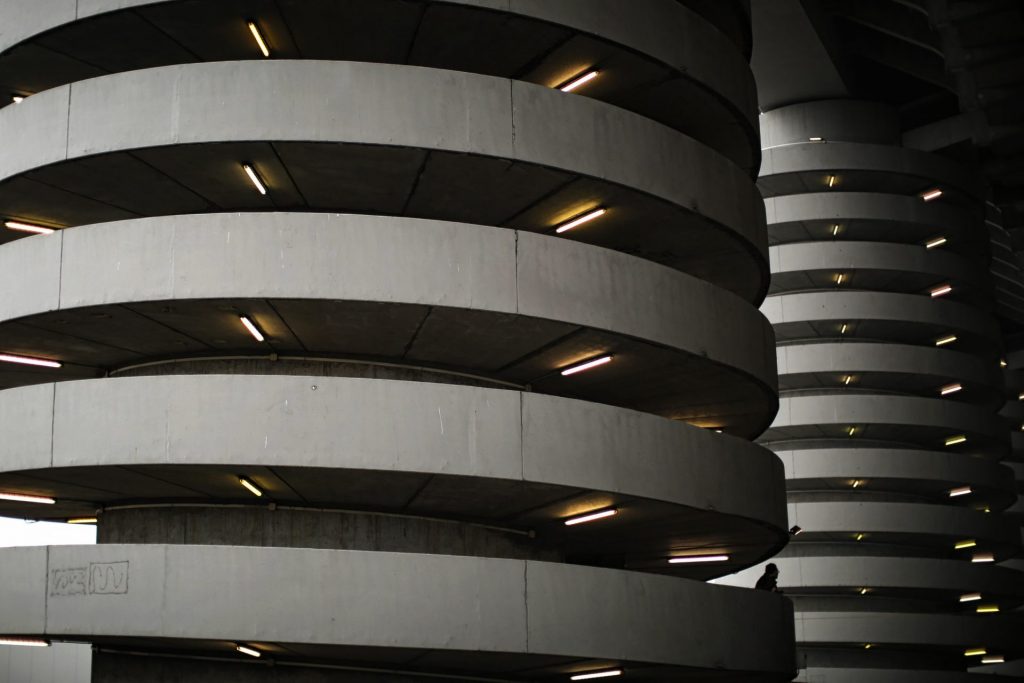
When you are winning at the San Siro, there is no thought of the reasons that the stadium must be replaced: The endless walk up those spiral ramps to a cramped plastic bucket seat in the gods, the lockless, pitch-black, hole-in-the-ground toilets that still lurk in some areas, the limited access for disabled fans.
A stadium that was originally constructed in the “English style”, meaning without a running track between stands and pitch, and then rose with renovations in the early 1950s and late 1980s to make English football grounds look antediluvian by comparison, is now permanently eclipsed by the Premier League’s new arenas. The homes of Spurs and Arsenal in north London seem decades ahead, as the San Siro once did when many of us glimpsed it for the first time on TV coverage of the 1990 World Cup finals.
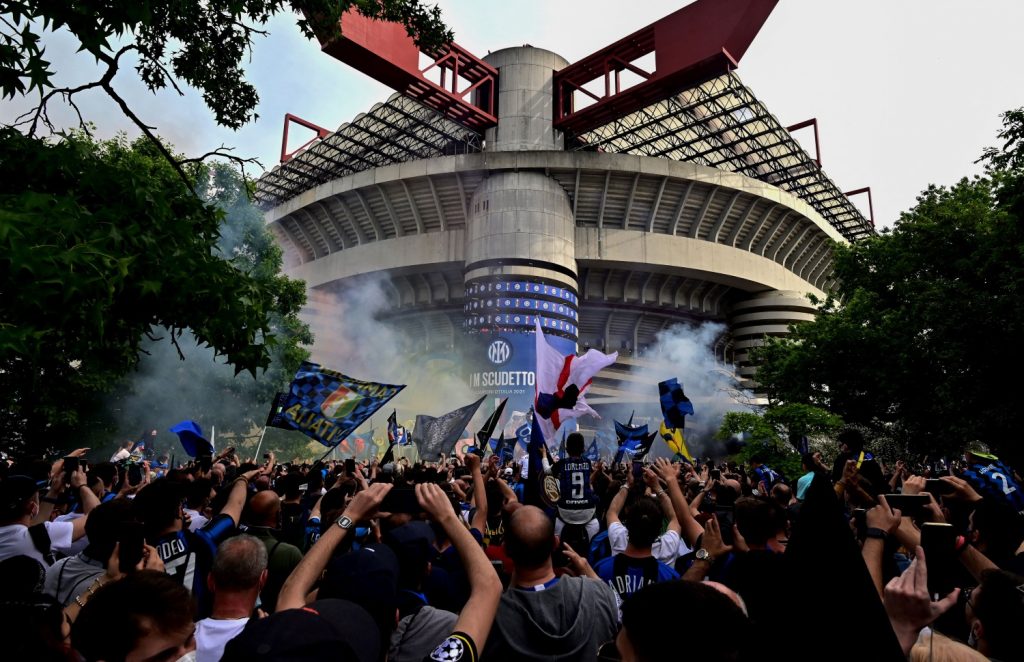
Manchester City’s Etihad has the ramps if not the atmosphere; it is emblematic of how the Premier League’s new money and technical excellence has overhauled the rigid, deep traditions of Serie A. Attempting to keep up with England is one reason the San Siro’s overdue replacement is finally nigh. Unable to compete with the TV money doled out by Sky Sports and BT – City made £141m from broadcast rights last season, more than double what Milan took from the Italian networks – the clubs are determined to maximise their matchday revenue. Because the San Siro is rented from the city, their take from home matches in a 75,000-capacity stadium is roughly equivalent to the amount now- relegated Southampton made from Premier League games at the 32,000-seat St Mary’s.
Those who follow the Nerazzurri or Rossoneri know what they are about to lose. The clubs have won a combined 30 league titles since they moved in. Inter won the second of their three European Cups at “home”; a 1965 defeat of Benfica remembered as the triumph of rock-solid catenaccio tactics overwhelming a more open opponent in a rainstorm. Milan fans will prefer to remember the two-legged semi-final of 2003, in which Inter were beaten on the away goals rule en route to the great Paolo Maldini lifting the Champions League trophy after a penalties win against Juventus in Manchester.
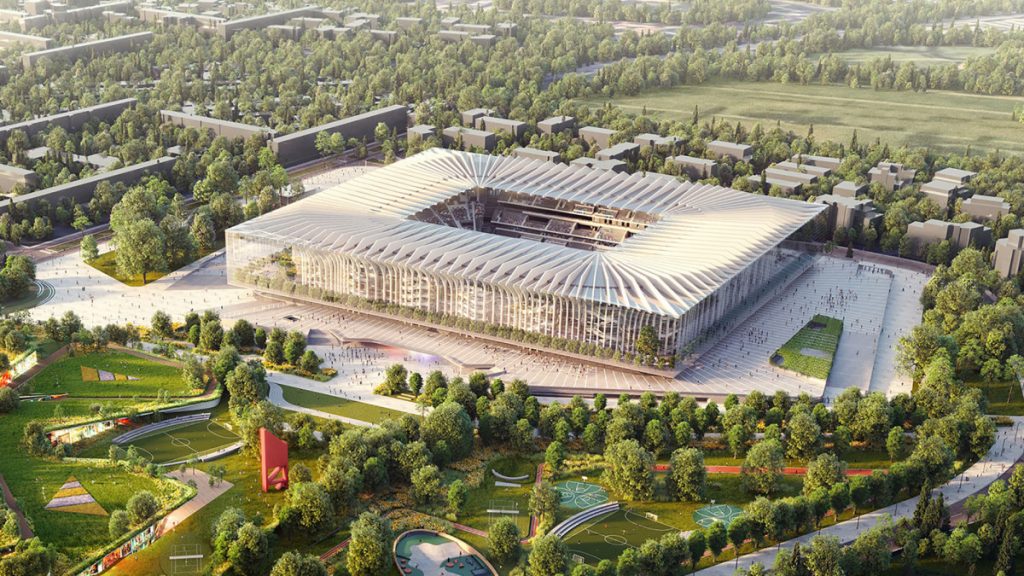
For Britons of my vintage, the sight of the San Siro in the opening game of Italia 90 remains imprinted in the psyche. Fourteen months after the Hillsborough disaster and with fences still in place in British grounds, here was a stadium that made the soul leap rather than shrink in fear. It will always be there in our memories: the spiralling ramps, the double-tiered stands, the red-girdered roof, Cameroon beating Argentina at the start of the summer of our lives.
The San Siro will die. The San Siro will live forever.


